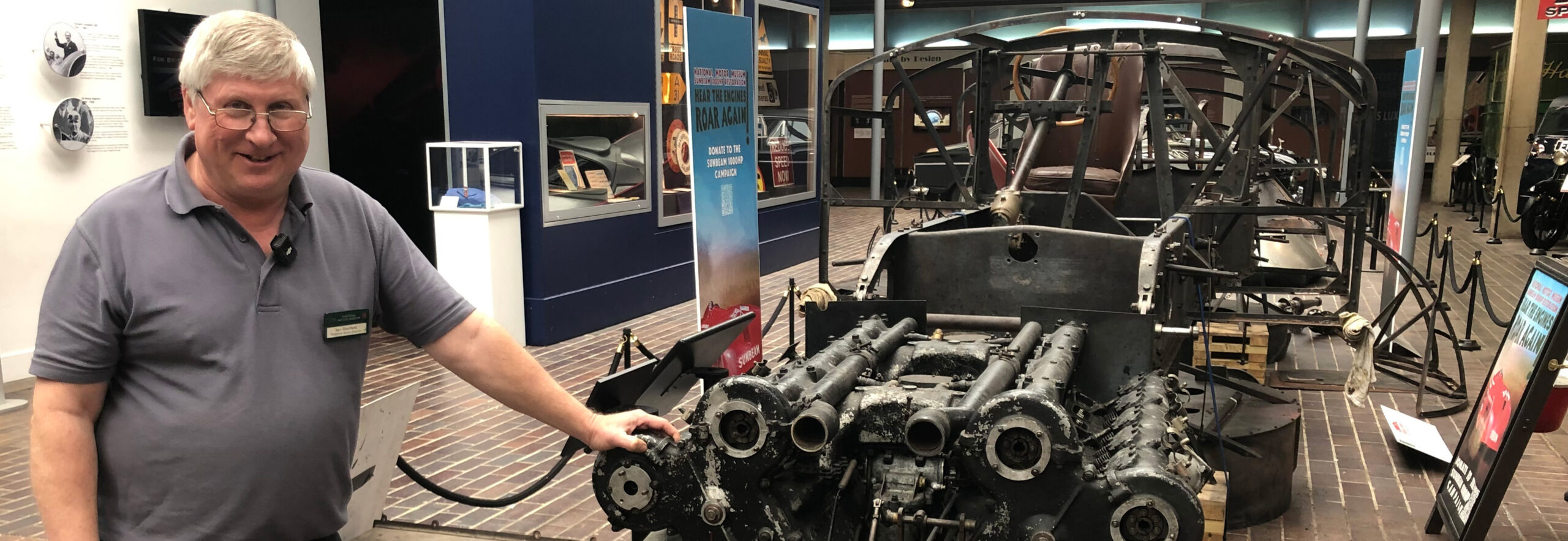
Everything on Sunbeam 1,000hp was bespoke, apart from its two colossal 22.5 litre Matabele V12 aero engines which were spare parts from Sunbeam’s works – and neither has run for more than 80 years.
Now, after a year-and-a-half of work to strip down and take apart the rear engine, National Motor Museum engineers are ready to start its rebuild.
New bespoke engine parts have been made, while others have been re-metalled. Piston rings had disintegrated and needed replacements, while original con rods, pistons and cranks have been restored and are ready to bolt back together.
The process has been forensic, as bolts and parts have been removed, then meticulously labelled and bagged ready for the rebuild. There has been no manual or documentation to follow during the Sunbeam 1000hp restoration, so the workshop team has relied on rare pictures they have been able to find from the original design team and factory workforce.
National Motor Museum Senior Engineer Ian Stanfield said: “We have found unique engineering and a wonderful quality of workmanship during the restoration so far – but nothing has been easy to get at.”

Repairing cracks and replacing missing parts
Cracks in the engine’s crankcase were found during testing and those have been repaired using laser welding.
Unlike the turning handle of Sunbeam 350hp, Sunbeam 1000hp relied on an air starter mechanism and the workshop team found that most of its parts were missing – so are now making replacements.
Expert National Motor Museum engineers have drawn on experience from restoring Sunbeam 350hp, in preparation for its 90th Land Speed Record anniversary at Pendine in 2015.
Ian said: “It’s been a privilege because not everyone gets to work on a Land Speed Record breaker. Working on Sunbeam 350hp was one of the best things I’ve ever done and this is up there with it because it preserves these landmark cars for future prosperity.”
He explained: “After completing Sunbeam 350hp, we found problems with Sunbeam 1000hp which we weren’t willing to leave, as the custodians of its future. As oils and lubricants get older, they turn into a tar-like consistency and ‘glue’ engine parts together. That deterioration continues if it is not dealt with.”

Each of the massive Sunbeam 1000hp engines once produced 435bhp and a forklift truck was needed to lift them from the chassis. Both engines had previously been used for power boat racing in Maple Leaf VII.
A 1918 datemark was found on the rear engine, while the front engine has a plaque which had been attached before it became part of the National Motor Museum collection, saying: “Engine will not start owing to vital part of mechanism being removed.”
The front engine and exposed chassis can be seen by visitors to Beaulieu on display in the National Motor Museum.
There are plans for a rear engine start-up out of the car, before it is lowered back into the chassis. Sunbeam 1000hp can run with just one engine but once the restoration of the rear engine is complete, the team plans to begin work on the front engine – which will take a further year.

Funds are now needed to complete the full restoration project. Sunbeam 1000hp Restoration Campaign was launched with Hampshire-based Brookspeed Automotive and aims to raise £300k to complete the restoration of ‘The Slug’ with the ambition of taking it back to Daytona Beach in Florida for the 100th anniversary of its record-breaking run in 2027.
Donations for the Sunbeam 1000hp Restoration Campaign can be made online at https://nationalmotormuseum.org.uk/sunbeam-1000hp-restoration-campaign/. Sponsors and corporate donors who would like to be associated with the campaign are urged to get in touch by emailing michelle.kirwan@beaulieu.co.uk.
